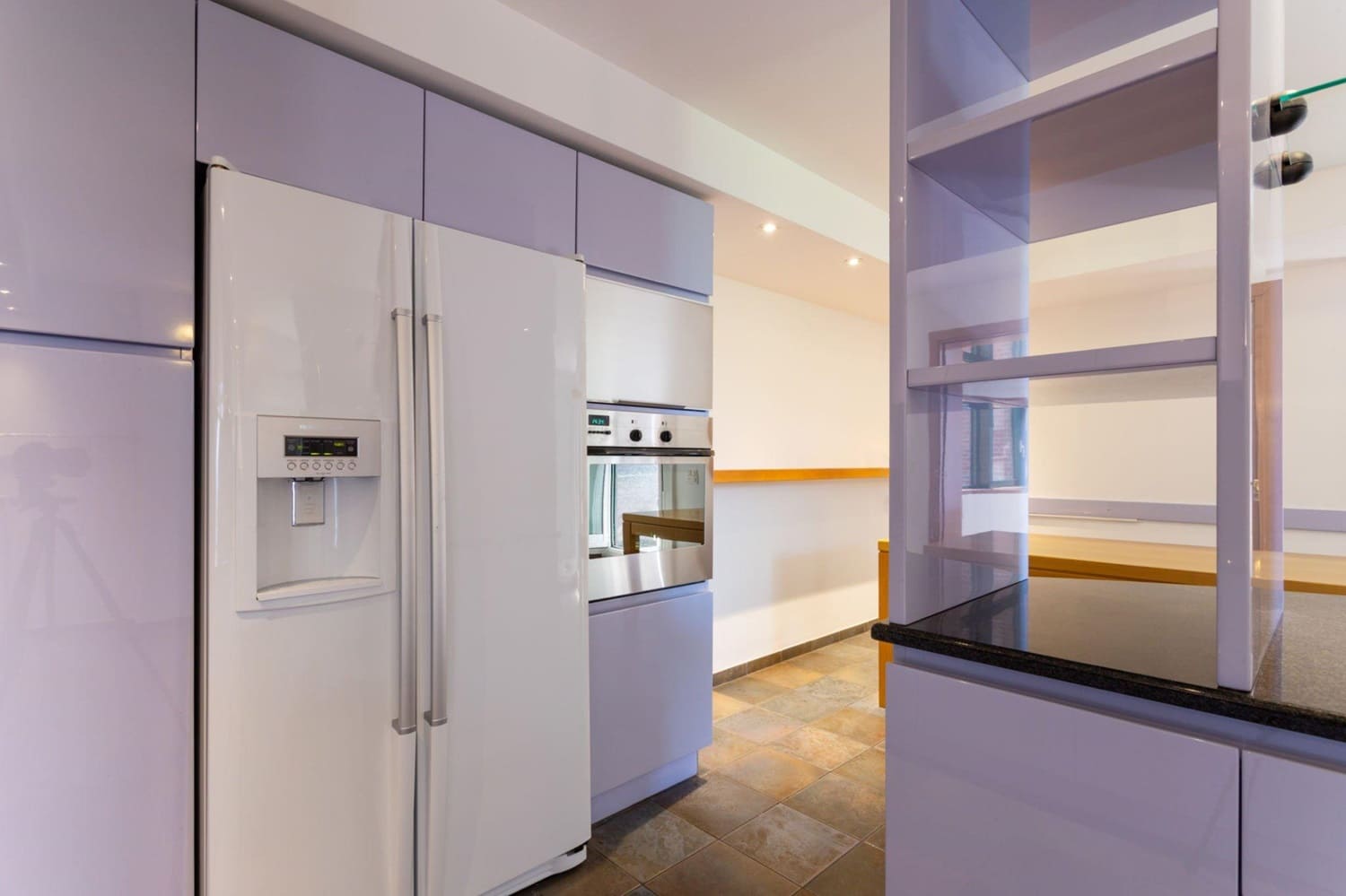
Choosing a built-in refrigerator
Household appliances in any kitchen are designed to provide the hostess with all the conditions for cooking delicious food and maximum functionality on a minimum area. That is why all kinds of multifunctional devices appear on the market, for example, a microwave and an oven in one device.
In the same article, we will talk about probably the most important link in the ensemble of kitchen appliances – the built-in refrigerator, how to choose it and what characteristics to pay special attention to.
Advantages and disadvantages
To begin with, let’s look at the general pros and cons of built-in refrigerators over stationary analogues.
Positive:
- Space saving.
- The ability to hide equipment behind furniture facades.
- Hence the special aesthetic effect.
- Practical and minimalistic.
Minuses:
- Higher cost.
- Smaller capacity.
- Special requirements that must be taken into account when ordering a kitchen.
As can be seen from the list above, the built-in refrigerator allows you to save space, it is invisible, which is very convenient.
But in return, you will have to sacrifice the internal volume and a higher price, as well as order a kitchen set after you have decided on the model.
What should I pay attention to?
The refrigerator is a rather large, complex and expensive device. Modern models have a number of important characteristics that need to be taken into account when choosing.
Let’s look at them in more detail:
Dimensions are perhaps the most important thing to pay attention to when choosing. This is especially true when the kitchen set has already been ordered and you need to pick up a refrigerator for it. It’s wrong, but it happens. The standard height is 1770 – 1800 mm.
Number of doors – there are two-chamber, but at the same time one-door, but most are equipped with separate doors for the refrigerator and freezer. It is important to know the dimensions of these doors, as well as the minimum and maximum dimensions of the facade that can be hung on them. Usually this is necessarily indicated in the description of the model.
Energy consumption class – more and more refrigerators, especially from European manufacturers, are reaching minimum electricity consumption. It is recommended to choose a refrigerator with an energy consumption class of at least A+, the best option is A + ++.
The location of the freezer is a classic and the most suitable solution will be in favor of the lower location of the freezer.
Volume – as mentioned above, these refrigerators have a smaller volume than the classic ones. But nevertheless, it is this indicator that can be decisive when choosing a particular model.
Defrosting is a very important parameter of any built–in refrigerator and that’s why. Due to the fact that it is built into a furniture niche, which in most cases is made of MDF or wood, and also stands on a pallet made of the same materials, it cannot be allowed to flow. Therefore, we strongly recommend that you:
- For the refrigerator – either drip defrosting, or better by No Frost technology;
- For the freezer – No Frost is required! Yes, it will cost you a little more, but you will save the refrigerator, furniture, flooring in the kitchen, money and nerves.
Noise level – due to the fact that the device is hidden in a niche, it is less audible. But it is still recommended to pay attention to the number of decibels that the manufacturer claims.
Additional features
Manufacturers of household appliances strive to surprise consumers with more and more new features of a particular model. Applicable to refrigerators, you can focus on the following optional characteristics:
- Adjustable humidity level – as a rule, it takes place in the form of small chambers for storing vegetables and fruits in the lower compartment of the refrigerator. In some models, it is called the “Freshness Zone”. Very convenient in summer.
- Alarms – sound signals when the door is open, the temperature in the freezer drops or it is overloaded, etc.
- The material of the shelves – the internal shelves made of tempered glass have proven themselves the best.
- Antibacterial coating – the inner surface of the chambers is not exposed to the spread of bacteria and fungi, which may occur from improper storage of some products.
- Accessories and filling – it is the housewives who pay attention to this indicator. It is convenient if the refrigerator has a shelf for storing eggs, a compartment for tall bottles, a special place for medicines, etc. Unfortunately, the description of models does not always indicate the presence of these accessories.
Practical tips
In addition to the difficulty of choosing a suitable model of a built-in refrigerator for the kitchen, you also need to know a few practical nuances:
Assembly – we strongly recommend that you make a choice in favor of European assemblies, especially Germany, Great Britain, France, the Czech Republic. This advice also concerns the issue of choosing manufacturers’ brands.
Health check – be sure to check the refrigerator as soon as it is delivered to you. Even if it is hermetically packed and there is a very, very branded warranty on it, it is better to check and return it immediately.
Installation and installation of facades – it is better to entrust this process to professionals. Firstly, to insert a refrigerator into a niche, you need several people who will do it without damaging appliances and furniture. Secondly, you need to properly fix the door on the refrigerator itself and on the right side. And thirdly, attaching facades is not as easy as it may seem at first glance.
Niche arrangement – in principle, all sensible manufacturers and furniture assemblers know that a reinforced pallet should be made for a built-in refrigerator, and also leave room for air outlet in the form of a grate or a gap in the upper sector of the niche.
If you are interested in the choice of conventional non-embedded models, then by all means look at our new 2018 refrigerator rating, there is a top of the best.
As it has already become obvious, choosing a built-in refrigerator in the kitchen requires some theoretical preparation. This will allow you to avoid replacements and refunds of unsuitable models in the future, as well as to choose the most suitable option.
Selecting a Built-in Refrigerator with Expert Assistance
When choosing a built-in refrigerator during kitchen remodeling, it’s essential to consider both functionality and aesthetics. Built-in refrigerators offer a seamless look, integrating smoothly with cabinetry and enhancing the overall design of the kitchen. They come in various sizes and styles to match the kitchen’s layout and design theme. However, their installation can be more complex than standard models, requiring precise measurements and sometimes custom cabinetry work. Therefore, working with a reputable remodeling company is advisable to ensure proper installation and integration with other kitchen elements. These professionals can provide valuable insights and handle the complexities of remodeling, ensuring that the new kitchen not only looks great but is also highly functional.


